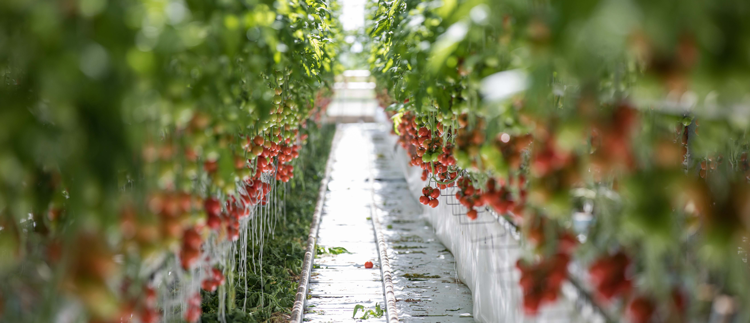Greenhouse Solutions Take Agricultural Sustainability Several Steps Forward
People are often unaware of the fact that greenhouses complement drip irrigation by taking sustainability several steps forward, increasing yields even further with fewer resources. In fact, growing crops in greenhouses produces 6 to 10 times the amount of yield compared to growing them in open fields.
Sustainability is at the heart of Netafim’s activities. For the past 50 years we have been constantly striving to educate the global market about the advantages of drip irrigation and how it enhances sustainability by producing more yield with less resources. But people are often unaware of the fact that greenhouses complement drip irrigation by taking the sustainability several steps forward, increasing the yields even further with far less resources. In fact, growing crops in greenhouses produces 6 to 10 times the amount of yield compared to growing them in open fields. This means that for each square meter of land or cubic meter of water used in a greenhouse, there is 6 to 10 times more yield compared to growing in an open field. These resources savings can be even furthered by recycling water and fertilizers. Crops that are grown hydroponically in greenhouses have relatively small roots, and therefore 40% of the drainage water can be recycled for reuse. Also, 40 to 50% of the fertilizers can be reused.

Creating optimal growing conditions
Greenhouse projects can be found in all climate zones including hot, cold, moderate, and tropical climates. One of the greatest advantages of greenhouses is the ability to achieve optimal growing conditions. This is as opposed to open fields, where climate control is not possible. For example, in the winter, when it is too cold to grow tomatoes outdoors, they can be grown in warmer conditions in a greenhouse. And in the hot summers, when it is too hot or dry to grow outside, humidity can be added to grow in the greenhouse. The ability to control the growing conditions also reduces the risks associated with sudden changes in weather conditions, creating adding security and predictability to the growers.
Read how Belje grows tomatoes in sub-zero temperatures
Greenhouse crops require less pesticides
Growing inside greenhouses or crop protected houses with netting, requires 50% less pesticides For this and other reasons, in various countries, such as the US /Canada/Germany/Holland/Japan , regulators have already begun requiring the growers of food crops, such as vegetables, to use greenhouses or crop protected houses.

A win-win solution
Today we see more regulations requiring growers in greenhouses and crop protected houses to follow specific growing protocols. All processes must be monitored, crops must be of a required shape, size, and taste, and the amount of pesticide must be within a defined range and not administered prior to harvest. On the other hand, the greenhouses and crop protected houses provide growers with the security that they are growing and supplying quality produce according to market requirements. So it’s a win-win for both sides.
Read how GP Alpha found a greener way to grow premium tomatoes all year-round

